|
|
Dear colleagues
Every year PSI counts 1500-2000 user visits at the neutron source (SINQ), the muon source (SμS) and the facilities for particle physics including the Ultracold Neutron Source (UCN). During more than 3000 instrument days more than 800 experiments are performed each year.
Those user facilities are all driven by the High Intensity Proton Accelerator HIPA that provides protons of 590 MeV kinetic energy at a beam power of up to 1.4 MW. High beam power may indeed be of importance for precise measurements of short duration. However, the availability of a large research facility may be of greater importance to users.
|

Joachim Grillenberger
|
|
Our goal is therefore to provide both: high availability and stability but also continuous improvement of the facilities' performance. We are thus currently instigating a project to upgrade the Injector 2 cyclotron. Having already replaced one of the two 150 MHz resonators with a new 50 MHz resonator this year, the second resonator will be replaced during the 2019 shutdown period. Both resonators will be fully operational with two new radio-frequency power supply chains in 2020.
The more powerful RF-system will also leave the door open for a further upgrade that will allow us to reach our ultimate goal of a 3 mA beam current. This, coupled the intended upgrade of the SINQ neutron guide system, will maintain the facilities’ competitiveness and attractiveness to experimentalists for the years to come, even after 47 years of successful HIPA operation.
Joachim Grillenberger,
head - proton facilities PSI
|
|
Next proposal submission deadlines:
SLS: PX beamlines
deadline: October 15, 2018
more information
Particle Physics
deadline: January 7, 2019
more information
SµS
deadline: February 28, 2019 (tbc)
more information
SLS: non-PX-beamlines
deadline: March 15, 2019
more information
SwissFEL
deadline: March 15, 2019
more information
SINQ (upgrade program 2019-20)
deadline: tba
more information
An overview about all proposal submission deadlines of the PSI facilities can be obtained here.
|
|
|
On the path to new high-performance transistors
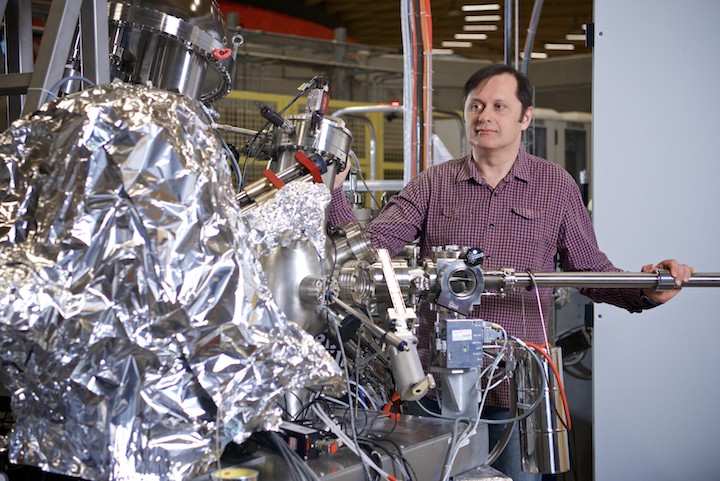 SLS - X-rays aid better understanding of electron mobility in a modern transistor SLS - X-rays aid better understanding of electron mobility in a modern transistor
The electronics industry expects a novel high-performance transistor made of gallium nitride to offer considerable advantages over present-day high-frequency transistors. Yet many fundamental properties of the material remain unknown. Now, for the first time, researchers at the Paul Scherrer Institute PSI have observed electrons while they were flowing in this promising transistor. For that they used one of the world's best sources of soft X-rays at PSI's Swiss Light Source SLS.
Read the full story
|
|
|
L.L. Lev et al, Nature Communications 9, 2653 (2018)
|
|
|
Experimental signatures of emergent quantum electrodynamics in Pr2Hf2O7
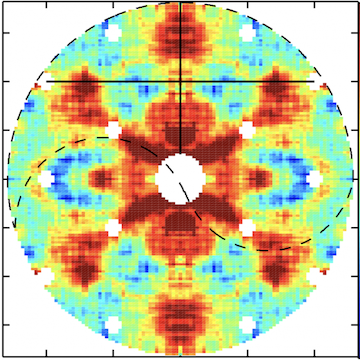
SINQ - Device applications in quantum information technologies
In a quantum spin liquid, the magnetic moments of the constituent electron spins evade classical long-range order to form an exotic state that is quantum entangled and coherent over macroscopic length scales. Such phases offer promising perspectives for device applications in quantum information technologies, and their study can reveal new physics in quantum matter. Quantum spin ice is an appealing proposal of one such state, in which the fundamental ground state properties and excitations are described by an emergent U(1) lattice gauge theory. This quantum-coherent regime has quasiparticles that are predicted to behave like ...
Read the full story
|
|
|
R. Sibille et al, Nature Physics 14, 711 (2018)
|
|
|
Collective magnetism in an artificial 2D XY spin system
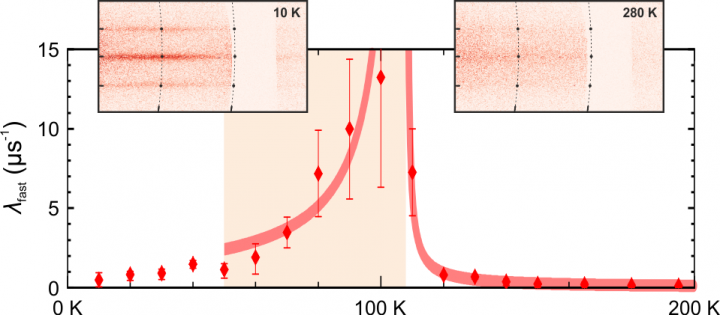 SμS and SLS - Combining low-energy muon-spin relaxation and soft X-ray scattering SμS and SLS - Combining low-energy muon-spin relaxation and soft X-ray scattering
Two-dimensional magnetic systems with continuous spin degrees of freedom exhibit a rich spectrum of thermal behaviour due to the strong competition between fluctuations and correlations. When such systems incorporate coupling via the anisotropic dipolar interaction, a discrete symmetry emerges, which can be spontaneously broken leading to a low- temperature ordered phase. However, the experimental realisation of such two-dimensional spin systems in crystalline materials is difficult since the dipolar coupling is usually much weaker than the exchange interaction ...
Read the full story
|
|
|
N. Leo et al, Nature Communications 9, 2850 (2018)
|
|
|
First serial femtosecond crystallography (SFX) pilot user experiment at SwissFEL
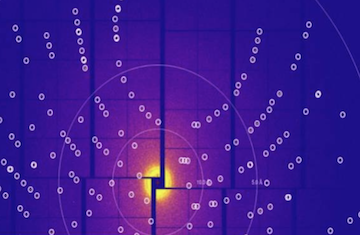 SwissFEL - Commissioning the Alvra Prime station for future SFX experiments SwissFEL - Commissioning the Alvra Prime station for future SFX experiments
On the 7th to 12th of August 2018, a collaborative group of scientists from the Paul Scherrer Institute and members of the LeadXpro and Heptares pharmaceutical companies led by Karol Nass (PSI macromolecular crystallography MX-SLS group) performed the first serial femtosecond crystallography (SFX) pilot user experiment at the Swiss X-ray free electron laser SwissFEL. Serial femtosecond crystallography is an emerging and highly successful technique for structure determination of radiation sensitive microcrystals that takes advantage of the ultrashort duration of XFEL pulses, and allows accessing ultrafast reaction time scales previously not reachable by conventional time-resolved crystallography at synchrotrons.
Read the full story
|
|
CMS Young Researcher Prize awarded to Lea Caminada
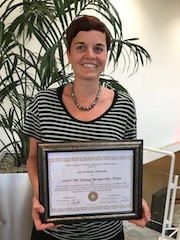 Particle Physics - Distinction for outstanding young scientist Particle Physics - Distinction for outstanding young scientist
Lea Caminada, a researcher in the High-Energy Particle Physics group of the Laboratory for Particle Physics (LTP) in NUM, has received the annual CMS Young Researcher Prize. This Prize is given once a year to outstanding young physicists who made very significant and sustained contributions to the CMS experiment at the LHC facility at CERN. Dr. Caminada has been recognized for her contribution to the construction, installation and commissioning of the two pixel detectors which were build at PSI for the CMS experiment. Her work also included the measurement of the B-meson production cross section and the observation of the Higgs boson in association with top quarks.
Read the full story
|
|
PSI-FELLOW-II-3i/COFUND – International Fellowship Program for Postdocs at Paul Scherrer Institut
applies for all PSI divisions and facilities
The EU co-financed funding program PSI-FELLOW-II-3i addresses international postdocs and offers these researchers the opportunity to perform their innovative scientific project in one of the four attractive scientific fields tackled at PSI: i) materials and matter, ii) life-sciences, iii) energy and environment and iv) accelerator technologies. The application has to be made together with a senior scientist at PSI. Please study the application concept and the eligibility criteria carefully.
The second call started on September 1, 2018 with deadline on November 30, 2018.
Please keep updated! |
|
League of advanced European Neutron Sources (LENS) established
SINQ
On September 12, 2018, representatives of eight European research infrastructures including SINQ at PSI signed the Charter of the League of advanced European Neutron Sources (LENS) at the International Conference of Research Infrastructures, ICRI2018 in Vienna. The signing ceremony marks the establishment of a new strategic consortium of European neutron source facilities with the aim, according to the charter, to “facilitate any form of discussion and decision-making process that has the potential to strengthen European neutron science via enhanced collaboration among the facilities”.
The founding partners in the consortium include both European and national facilities in France, Germany, Sweden, Hungary, the United Kingdom, Norway and Switzerland. Other qualifying facilities are invited to join at any time.
In addition, the proposal for the BrightnESS-2 initiative (Bringing together a neutron ecosystem for sustainable science with ESS) with PSI as one of 15 partner institutions has been accepted by the European Commission, recently. The project aims to foster the long-term sustainability of a vibrant neutron scattering community and a network of complementary facilities in Europe.
The Swiss involvement in both initiatives underlines the strong commitment of the Swiss neutron community in helping to shape the future European neutron landscape as demonstrated by the strong involvement in the European Spallation Source and an extensive upgrade program of the national source.
|
|
Zero field option for HAL-9500
SμS
Recently, a new zero field setup has been installed and tested for the HAL-9500 instrument. This setup allows using the detector system of HAL-9500 with its high time resolution to routinely perform zero field measurements (<20 mG) between 20 mK and room temperature. In addition, it is possible to perform weak transverse field experiments to e.g. determine magnetic volume fractions. The new zero field setup is thought to supplement the high transverse field µSR measurements up to 9.5 Tesla that worldwide can only be performed at HAL-9500.
|
|
SwissFEL Bernina first summer shutdown
SwissFEL
The Bernina instrument has gone into its first summer shutdown after an exciting time of commissioning and pilot experiments. After a very successful first pilot experiment end 2017, three more experiments were performed which brought Bernina closer to its goal of high selectivity in excitation and measurements for time-resolved experiments. Direct excitation of a phonon, a well defined crystal lattice vibration, was reached by phase-stable THz pulses. Ultrafast changes in magnetic structure were measured by resonant x-ray diffraction, as well as changes in electronic structures were tracked by femtosecond X-ray spectroscopy.
More information
|
|
Magnetically shielded room for the n2EDM experiment
Particle Physics
The neutron electric dipole moment (nEDM) search at PSI's ultracold neutron source (UCN) is moving towards the next phase with the new n2EDM apparatus and at least a factor 10 improvement in sensitivity.
The first and largest item of the new setup, the magnetically shielded room (MSR), is currently being installed in the UCN experimental area. Six layers of mu-metal and an aluminum RF layer will provide a quasistatic magnetic shielding factor of about 100'000 and more than 1 Million above a few Hz. The innermost shielded room with a volume of about 27m3 will be the largest magnetically ultrasilent room in the world, next to PTB's BMSR-2 in Berlin which is of similar dimension. The environment will allow ultraprecise field monitoring at the femto-Tesla level.
|
|
JUSAP - The Joint Users Association
Dear colleagues
In 2023, Swiss Light Source will undergo a large upgrade towards a diffraction limited source. It will significantly improve the emittance of the photon beam, lead to an increased brilliance and improve the coherence of the photon beam.
|
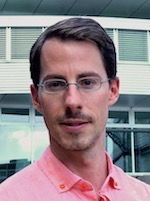
Claude Monney
|
|
This will have a strong impact on the different beamlines existing at SLS and their physical layout. It is therefore a good occasion for SLS users to discuss with their favourite beamline scientist to express their interests and wishes for possible upgrades.
Moreover, in order to get more information about the aims and some of the activities of the European Synchrotron and FEL User Organisation (ESUO), please do not hesitate to visit this link.
We encourage you, members of the PSI user community, to communicate to us any issues, concerns or suggestions. In this case, please contact me directly or other committee members.
Yours sincerely,
Claude Monney (on behalf of the JUSAP committee)
|
|
Upcoming events
Please have a look at our conference calendar.
|
|
|
|